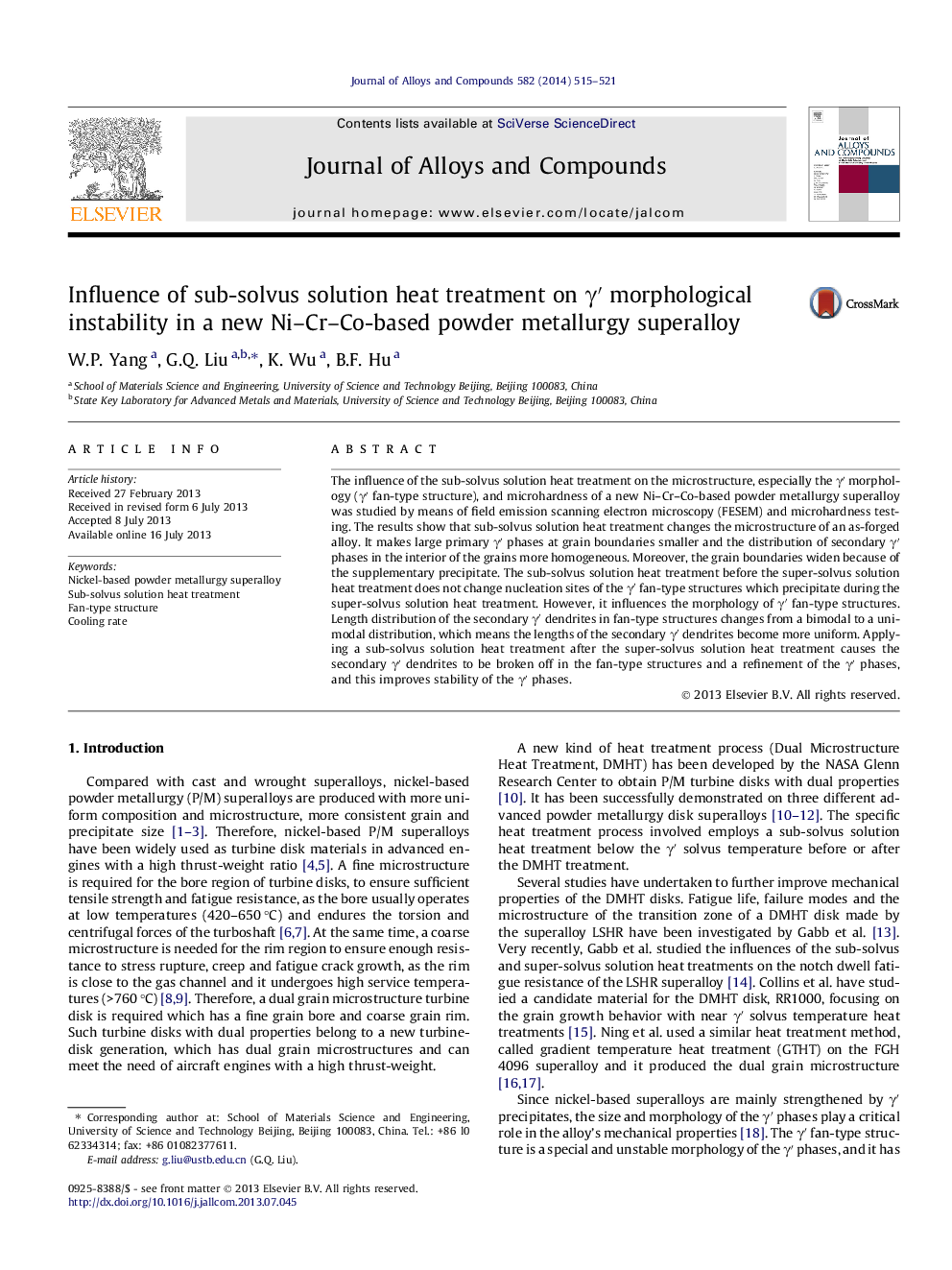| Article ID | Journal | Published Year | Pages | File Type |
|---|---|---|---|---|
| 1613129 | Journal of Alloys and Compounds | 2014 | 7 Pages |
•A special γ′ morphological instability in a new Ni–Cr–Co-based P/M superalloy was studied.•Three heat treatments were applied to the alloy and microstructures were observed.•Microstructure of the alloy was homogenized by sub-solvus solution heat treatment.•Sub-solvus solution heat treatment influences morphology of γ′ fan-type structures.•Sub-solvus solution heat treatment makes γ′ fan-type structures regular and stable.
The influence of the sub-solvus solution heat treatment on the microstructure, especially the γ′ morphology (γ′ fan-type structure), and microhardness of a new Ni–Cr–Co-based powder metallurgy superalloy was studied by means of field emission scanning electron microscopy (FESEM) and microhardness testing. The results show that sub-solvus solution heat treatment changes the microstructure of an as-forged alloy. It makes large primary γ′ phases at grain boundaries smaller and the distribution of secondary γ′ phases in the interior of the grains more homogeneous. Moreover, the grain boundaries widen because of the supplementary precipitate. The sub-solvus solution heat treatment before the super-solvus solution heat treatment does not change nucleation sites of the γ′ fan-type structures which precipitate during the super-solvus solution heat treatment. However, it influences the morphology of γ′ fan-type structures. Length distribution of the secondary γ′ dendrites in fan-type structures changes from a bimodal to a unimodal distribution, which means the lengths of the secondary γ′ dendrites become more uniform. Applying a sub-solvus solution heat treatment after the super-solvus solution heat treatment causes the secondary γ′ dendrites to be broken off in the fan-type structures and a refinement of the γ′ phases, and this improves stability of the γ′ phases.
